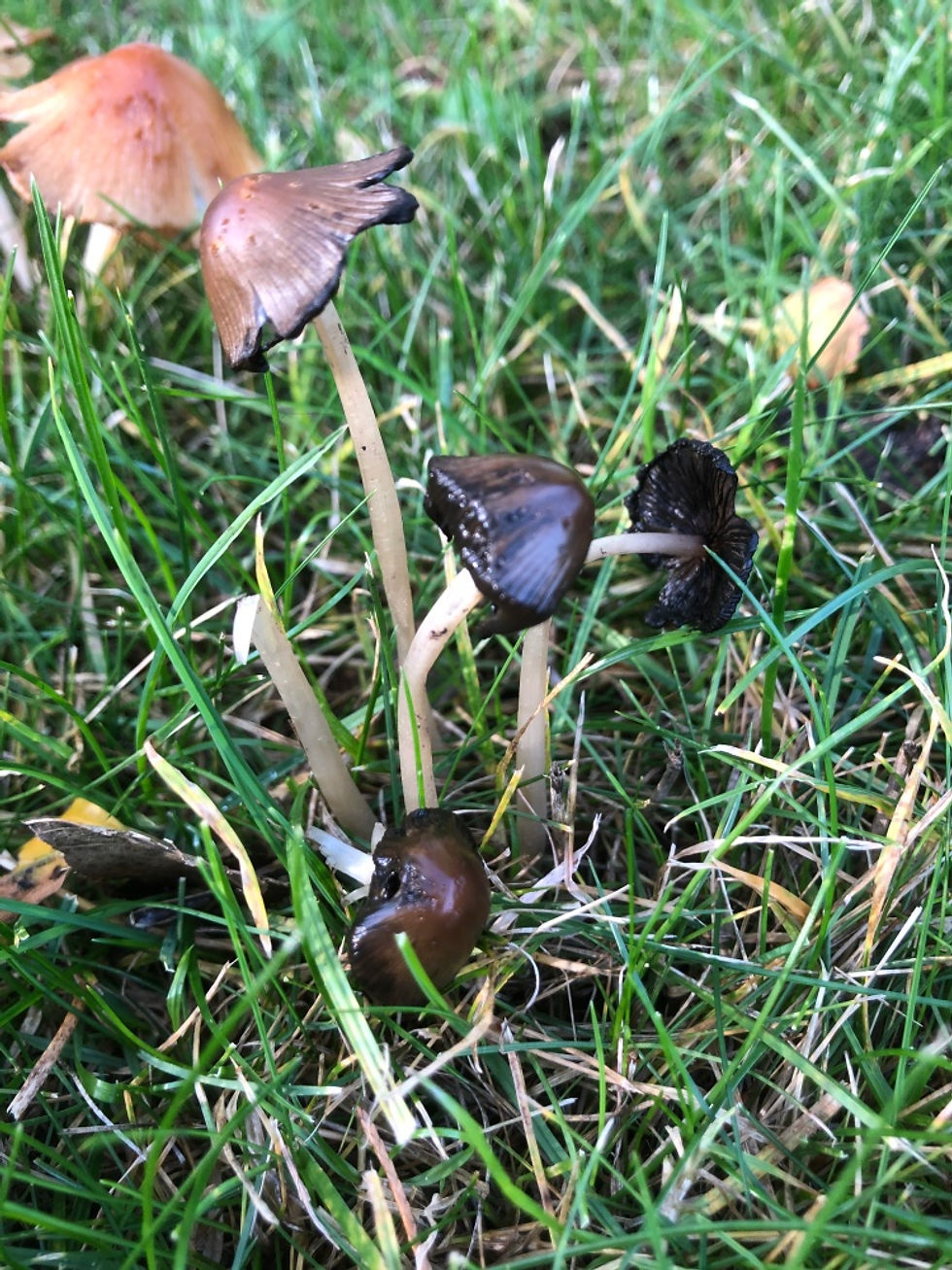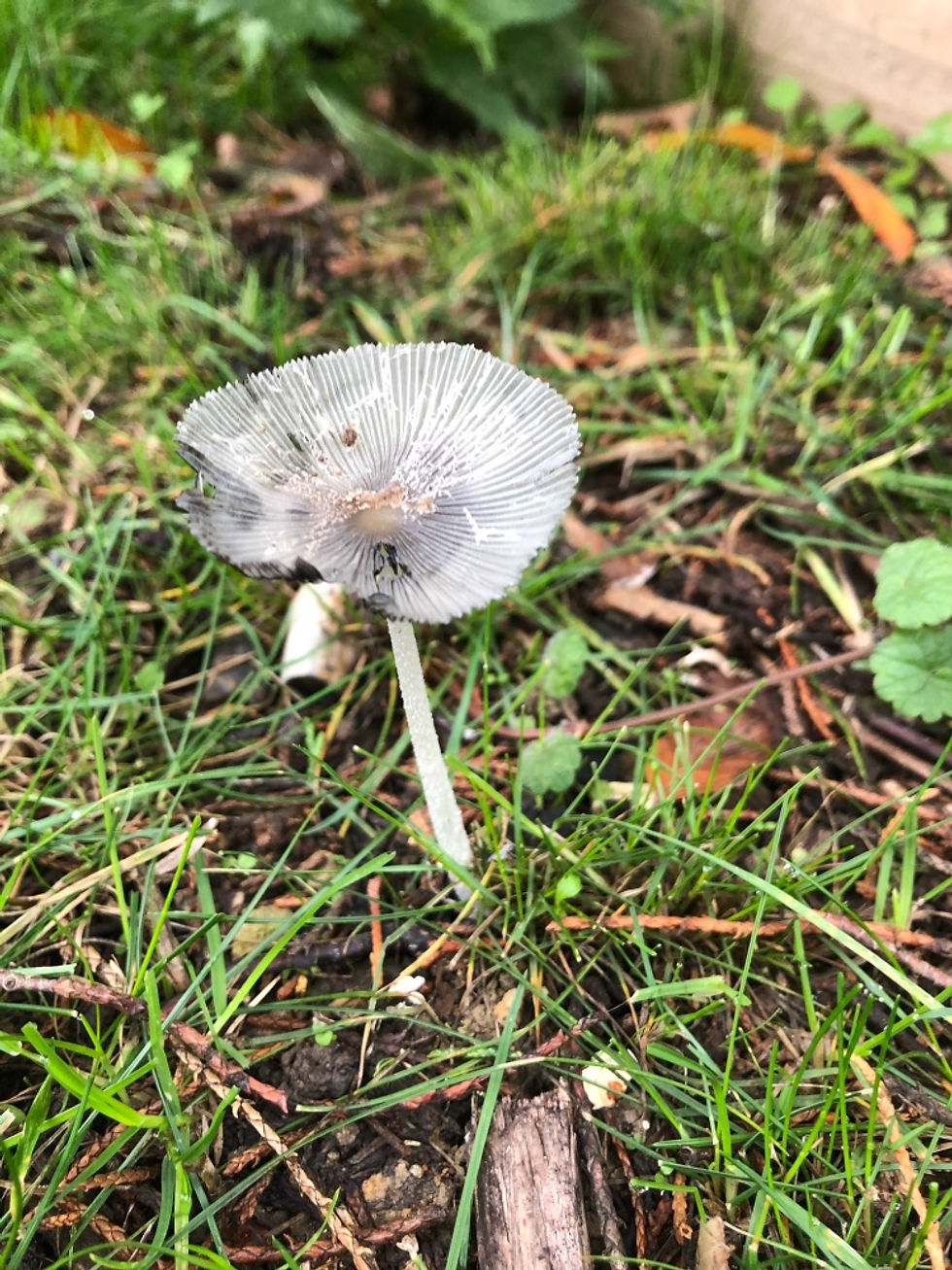Funky Fungi
- sallylouiseedge
- Oct 19, 2020
- 3 min read
I absolutely love how fungi sprout up all over the garden at this time of year as the colder, wetter atmosphere beckons them out to play. Their cheekiness fills me with childish delight – the way they pop up in a random spot, sometimes bold as brass in the middle of the lawn, sometimes tucked half out of sight in an overgrown corner. Sometimes alone, sometimes vast armies of them. Some cute and perfectly formed, some ugly, bulging and shapeless.




I’ve been having great fun trying to identify them, though with limited success. There are over 15,000 different species in the UK, so no wonder it’s proving a bit of a task! Today I’m just going to share my photos and a few learnings about the ones I (think) I’ve identified.
Common Ink Cap (or Tippler’s Bane)
These little babies pop up in the lawn in vast crowds. They start so cute and pert with their light brown caps all tucked in, then gradually open, edges becoming ragged and blackened, until finally they collapse into a slimy black mess.
This mushroom is also called Tippler’s Bane because a chemical in it stops the liver breaking down alcohol properly – leading to a bunch of symptoms that sound like an extremely nasty hangover.



Pleated Ink Cap
These delicate ink caps appear and die within 24 hours so I need to get out really early morning to see them at their most perfect. Didn’t manage it with these two!

White Dapperling
I had great fun with this one for a while, thinking it was a Destroying Angel, one of the most deadly mushrooms in the UK! Symptoms start with severe gastrointestinal pain, vomiting, diarrhea etc, then for a few hours, even a few days, you think you’ve recovered, but then suddenly it’s back with a vengeance, your liver and kidneys are irreparably damaged and coma and death follow. Great! And we’ve got that growing in our garden?!
Well, turns out, probably not. For starters, it’s not particularly common in southern England. Also, it’s very similar in appearance to the White Dapperling, which is very frequent in southern England, and what I think it probably is. Have a look at the comparison pictures below. They’re pretty much identical to look at, except for a kind of sac, called a volva, that the Destroying Angel grows out of, the remains of which can be found around it’s base – nothing like that on ours.
So we’re probably safe – and apparently the White Dapperling is pretty good to eat. However, all the advice says DON’T EAT – just in case it’s a Destroying Angel lying evilly in wait! Terrifying. So, keeping well away and reminding my long-suffering daughter, for the hundredth time, not to touch or eat.


Left – Probably White Dapperling (My picture) , Right – Destroying Angel (Online image)
Honey Fungus
I’m not 100% sure if I’ve got this one right, but if it is, it’s edible – good fried with garlic and a dash of sherry, so I’ve heard. Maybe I’ll try it one day when I’m a bit (ok a lot) more confident of my fungi spotting skills.

Turkeytail
Looks like a turkey’s tail! And we have it in a few places – on a fallen log, and more recently, growing in the bark that I put down on the lake path. It’s quite tough and leathery, and has circular brown/grey/white patterns on it. It’s not particularly edible, not because it’s poisonous, just that it’s leathery and tasteless. However, it is said to have medicinal properties.

No idea about this one yet…
But I love the way it’s creeping and unfolding from the flower bed, like a monstrous unpeeling orange.
So there we go. Any corrections on any of my identifications gratefully received. 🙂






Comments